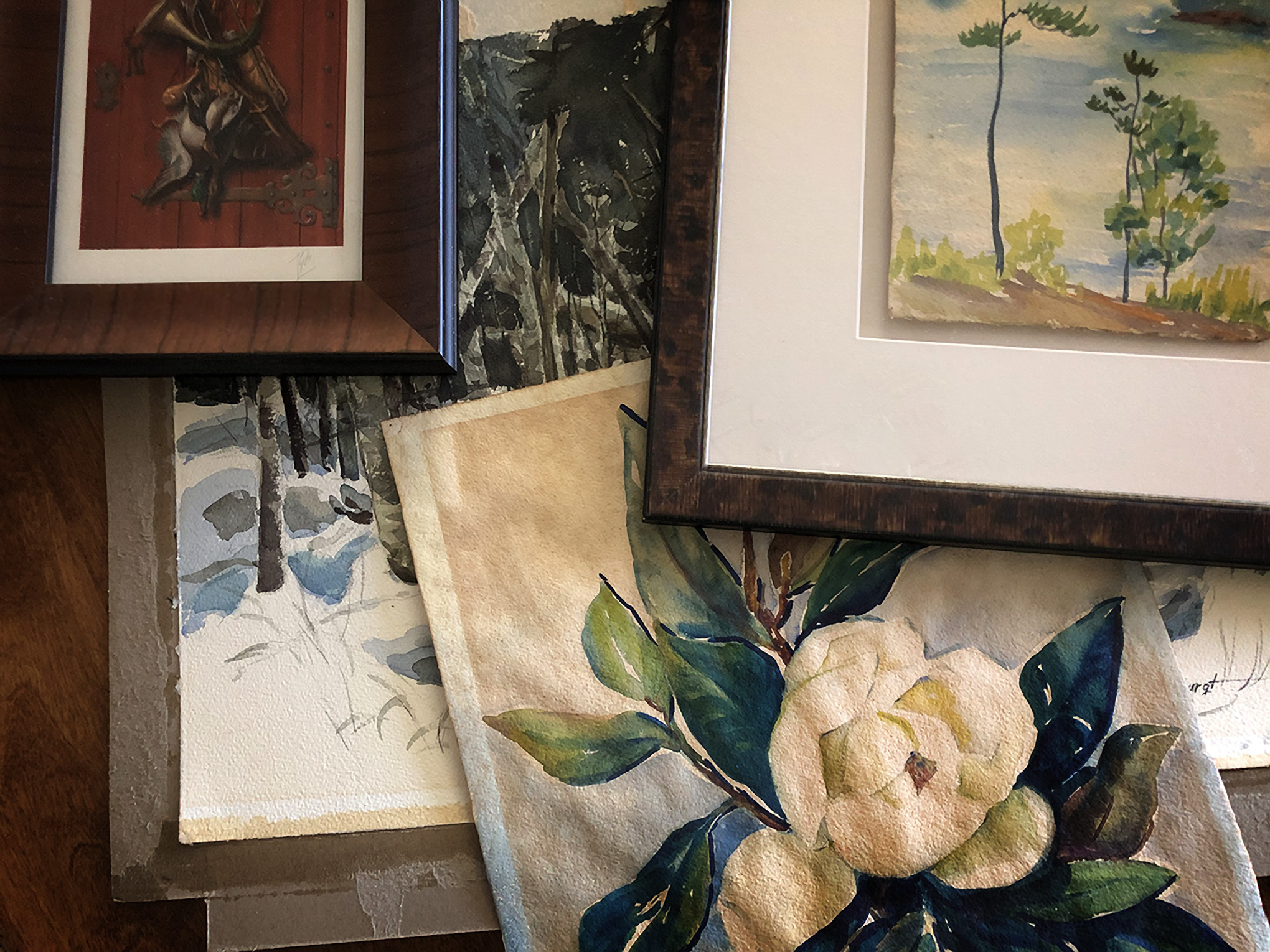—by Mark Harris, Founder & Director of the DAC Foundation
A large part of the mission of the Dixie Art Colony Foundation is EDUCATION and PRESERVATION. On May 16, 2019, the DAC Foundation held a “Lunch & Learn” program titled “Restoration & Preservation.” At this program, examples of how exposure to light and acidic mats can damage artwork were shown and discussed. There’s a saying, “You don’t know what you don’t know.” If you collect or own paper or fabric works of art, make sure you EDUCATE YOURSELF ON THE DANGERS OF UV LIGHT.
When you purchase a paper or fabric work of art from a gallery, or directly from an artist, ask if the work has been archivally framed. Also, keep in mind that when you take the artwork to a framer, most framers will use the cheapest materials available unless you request otherwise. Protect your investment by asking for UV light protection and acid-free mats.
There’s a reason why art museums limit the number of windows in the galleries. According to leading experts at NASA, paper, and fabric that is exposed to continuous sunlight without any UV protection can experience fading within as little as three to four hours. The time it takes for the damage to occur will depend on the individual piece of artwork and the amount of exposure over an extended period.
TONING OR DARKENING, CAUSED BY ULTRAVIOLET LIGHT CAN BE SEEN IN THE MAGNOLIA PAINTING ABOVE BY DAC ARTIST KATHRYN NEVILLE. Fortunately, the darkening of the paper can be reversed by a qualified professional. Source: Dixie Art Colony Foundation Archives
TIPS FOR KEEPING YOUR ARTWORK SAFE.
- ALWAYS fame works on paper using Museum Glass ®, Conservation Clear Glass ®, or Optium ® Acrylic Glazing. If you are unsure about the glass currently on your work of art. Take it to a reputable framer and have the glazing changed.
- Even if you use UV protected glazing, ALWAYS avoid displaying paper artwork in areas where direct sunlight enters the room. Conservation Clear Glass® will filter only 99 percent of the UV rays. Therefore, even with UV protection, experts recommend keeping your artwork away from direct SUNLIGHT. The cumulative effects of exposure can still be a concern.
- Experts also recommend letting your paper and fabric artwork rest. That is why museums limit the period of time that an article of fabric or paper is on display. If your wish is to preserve your artwork for future generations, keep this practice in mind. During the resting period, artwork should be stored in a dark climate-controlled environment.
SHOWN ABOVE ARE TWO IDENTICAL PRINTS. THE ONE TO LEFT SHOWS SERIOUS FADING CAUSED BY UV LIGHT. This type of damage cannot be reversed. Image Source: HighDesertFrameWorks.com
SHOWN ABOVE IS A DRYPOINT ETCHING THAT SHOWS TONING OR PAPER DARKENING CAUSED BY UV LIGHT. This type of damage can be reversed by a qualified professional. Image Source: Dixie Art Colony Foundation
NEXT, in this series, we will discuss the importance of using acid-free mats.
Dixie Art Colony Foundation, Wetumpka, Alabama



